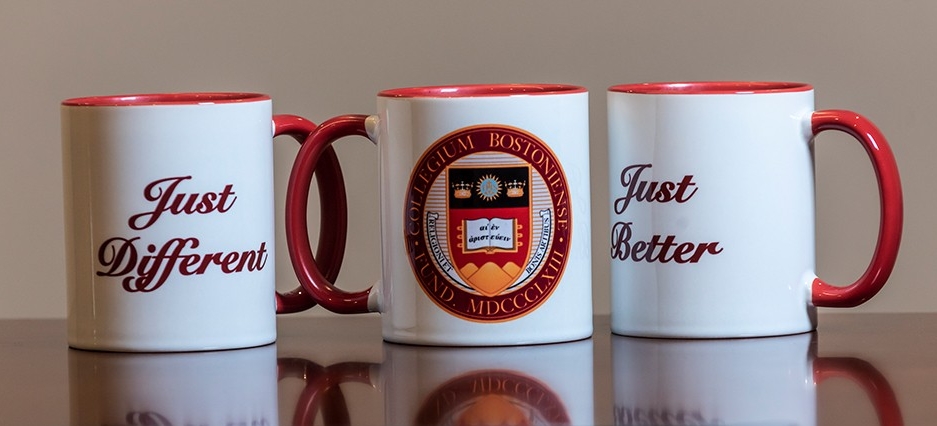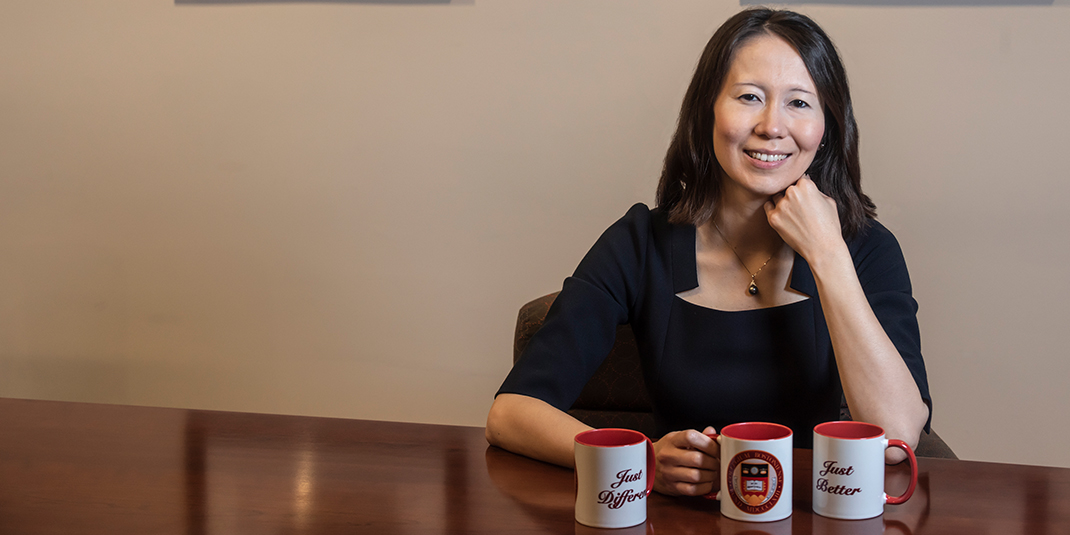This week, the nation has fixed its attention on the midterm elections—how voters across blue and red America turned out for their candidates. But every week, with less fanfare, liberals and conservatives make other choices that reveal their ideologies—not at the ballot box, but in store aisles and while browsing online.
Together with a colleague, the Carroll School’s Nailya Ordabayeva (Marketing) has studied how political ideology shapes consumer decision-making—with findings reported recently in the Journal of Consumer Research. The researchers conducted an array of experiments demonstrating this connection between the most basic beliefs about society and routine purchasing decisions.
“It all depends on what you think about hierarchy in society,” said Ordabayeva, referring to the beliefs that lead conservatives and liberals to think differently about their purchases.
In a nutshell, conservatives tend to believe that the social hierarchy is legitimate, which leads them to choose products that signal high status and success (think Ralph Lauren). Meanwhile, liberals take a dimmer view of hierarchy, and they seek out products that show how they are unique from others (think Urban Outfitters).
Previous research had already established that consumers try to differentiate themselves and fashion an identity through their purchases. What Ordabayeva and Daniel Fernandes (of the Catholic University of Portugal) have discovered is that conservatives and liberals do this in verifiably different ways.
The upshot: conservatives distinguish themselves through products that show “they’re superior—better than others,” Ordabayeva said, pointing to luxury brands with high price tags. “They see the purchase as a signal of hard work, which is what puts people at the top” of the pecking order. For their part, liberals are likely to think that getting to the top has less to do with hard work and motivation than with good luck and connections. “So they look for non-hierarchical ways to distinguish themselves, with the products that signal their uniqueness,” she added, citing items with unconventional colors or designs.
Better—or Different?

Among the willing subjects in these experiments were Boston College undergraduates. In one of five studies, 169 students were asked to choose between two coffee mugs. Both mugs sported the BC logo, but one also displayed the words, “Just Better,” while the other touted the message, “Just Different.” The students who had identified themselves as conservative were more than twice as likely to pick the mug that signaled superiority (“Just Better”), while the self-identified liberals opted for the one that conveyed uniqueness (“Just Different”). The experiment was conducted as part of the Consumer Insights Panel, a marketing research lab in Cushing Hall.
In their experiments, the researchers also measured beliefs about social hierarchy, asking participants whether they’re okay with statements such as “some groups of people are simply inferior to other groups” and “inferior groups should stay in their place.” Those who agreed (conservatives more than liberals) were far more likely than others to choose products that indicate superiority, and these findings helped establish an explanation for the link between political ideology and purchasing choices.
Along the way, Ordabayeva and Fernandes also ruled out other explanations of why the participants might have contrasting consumer preferences—for example, income. One study involved 353 adults from different income brackets who were asked if they’d ever consider wearing a red outfit at a professional networking event. They were told that most people would choose black attire for such an occasion, but that red would help them stand out.
Half of the participants perused an article describing red as the color of “success, prosperity, and accomplishment,” while the others were assigned an article claiming that red was increasingly the color of “originality, rebelliousness, and edge.” Regardless of income, conservatives were more interested in donning the red outfit after reading that it would signal success; liberals were more likely to go with red when it was framed as the color of uniqueness. The survey involved an online panel.
De-Polarizing the Purchases
Liberal and conservative participants in the studies did not always wind up on opposing sides of the consumer-political aisle. In a couple of experiments, the researchers used various techniques to (temporarily) manipulate beliefs about hierarchy and success. They did so, for example, by having participants recall a time when they succeeded through hard work (suggesting hierarchy is legitimate), or luck (suggesting it is not).
One of these studies involved making a choice between two gift cards, one for Ralph Lauren (superiority), the other for Urban Outfitters (uniqueness). As might be expected, conservatives elected Ralph Lauren—but only after recalling when hard work led them to succeed at something. When participants were prompted to think about how luck brought success, both conservatives and liberals preferred Urban Outfitters. They agreed, for once.
For Ordabayeva, these findings indicate that liberals and conservatives might be swayable on social issues or product choices hinging on their views of hierarchy. “It’s true that political beliefs are ingrained, but there are ways of shifting them, situationally,” the professor said, though she added that it would be harder to sway the stiffest ideologues on both left and right.
Near the end of their Journal of Consumer Research article, Ordabayeva and Fernandes allude to implications for political debates over questions such as income inequality. “For example, it is possible that opinions on issues such as wealth redistribution could be depolarized, at least temporarily, if public discourse changed individuals’ inherent views about the legitimacy of dominance-based hierarchy,” the authors write.
What Marketers Can Do
And how about the implications for marketing?
For one, marketers might want to position their products differently for different media outlets. They could cater to a desire for superiority when advertising in the Wall Street Journal (often preferred by conservatives), or put the accent on uniqueness when placing ads in the New York Times (more likely a liberal favorite), Ordabayeva suggests.
She says marketers should also be mindful of how red-state and blue-state voters may diverge in their thinking about products. Along that line, Ordabayeva and Fernandes analyzed over 130 million Google searches across the United States, and found that interest in luxury items and brands such as Ralph Lauren ran highest in red states, while blue staters voted with their pocketbooks for concepts and labels such as Urban Outfitters.
“Ultimately, this work introduces a new, political lens for understanding key differences in consumers’ purchase decisions,” Ordabayeva wrote in an item for Harvard Business Review this past summer. Pointing to the evidence that liberals and conservatives are bendable on questions of hierarchy, she added that the research throws light on how differences can perhaps be bridged—“in the store, and, maybe, at the kitchen table.”
William Bole is senior writer and editor at the Carroll School.
Photography by Lee Pellegrini.



